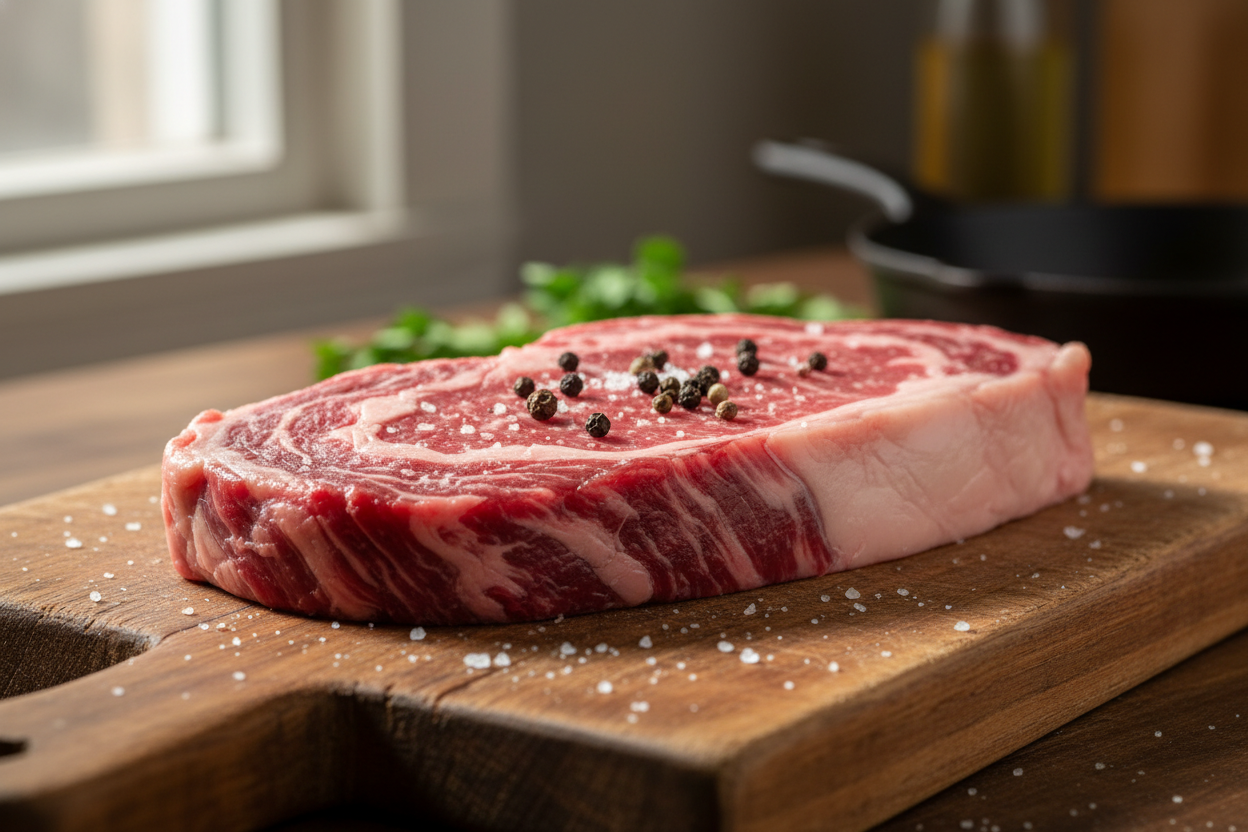Is There Blood in Your Steak? Let’s Clear That Up
We hear this question often: “Am I eating blood when I eat rare or medium-rare meat?” It’s a common concern, but one that comes from misunderstanding how meat actually works. The red juice in your steak is not blood at all.
What you’re seeing is a mixture of water and a protein called myoglobin. Myoglobin carries oxygen to the muscles of the animal, much like hemoglobin does in our blood. When meat is cooked, the myoglobin changes color from red to brown as it denatures — which is why rare meat looks red, medium meat looks pink, and well-done meat looks grayish brown.
Why “Well Done” Isn’t Better
Many people assume that cooking meat longer makes it safer or cleaner, but in reality, well-done meat is the same as overcooked vegetables. The nutrients break down, the texture toughens, and the flavor fades.
This is especially true with grass-fed steaks, which are leaner and naturally higher in essential fatty acids and nutrients. Overcooking steaks not only dries out the meat, but also reduces the very health benefits that make grass-fed beef so valuable.
What the Experts Say
Even Marilyn vos Savant, often recognized for her record-high IQ and practical approach to science, explained that the “red” in meat is not blood at all, and that proper cooking preserves nutrition and taste. The key is balance: cook your meat safely, but avoid destroying its natural chemistry in the process.
Keeping the Goodness in Your Steak
If you like your steak juicy and flavorful, aim for medium-rare to medium. This level of doneness keeps the natural juices intact and preserves much of the protein, iron, and B vitamins that make red meat a nutritional powerhouse.
For food safety, always make sure ground meats reach the appropriate internal temperature, since surface bacteria can be mixed throughout when grinding. But for whole cuts of steak, searing the outside and cooking to your preferred doneness keeps the meal both safe and nutrient-rich.
The Bottom Line
There’s no blood in your steak — just natural juices full of flavor and nutrition. Overcooking meat sacrifices those benefits and leaves you with a dry, less palatable meal. When it comes to grass-fed beef, the goal is simple: keep it juicy, keep it balanced, and keep the nutrients where they belong — on your plate.
Explore our full selection of grass fed steaks at Slanker’s Grass-Fed Meats and taste what real, responsibly sourced fish should be.



